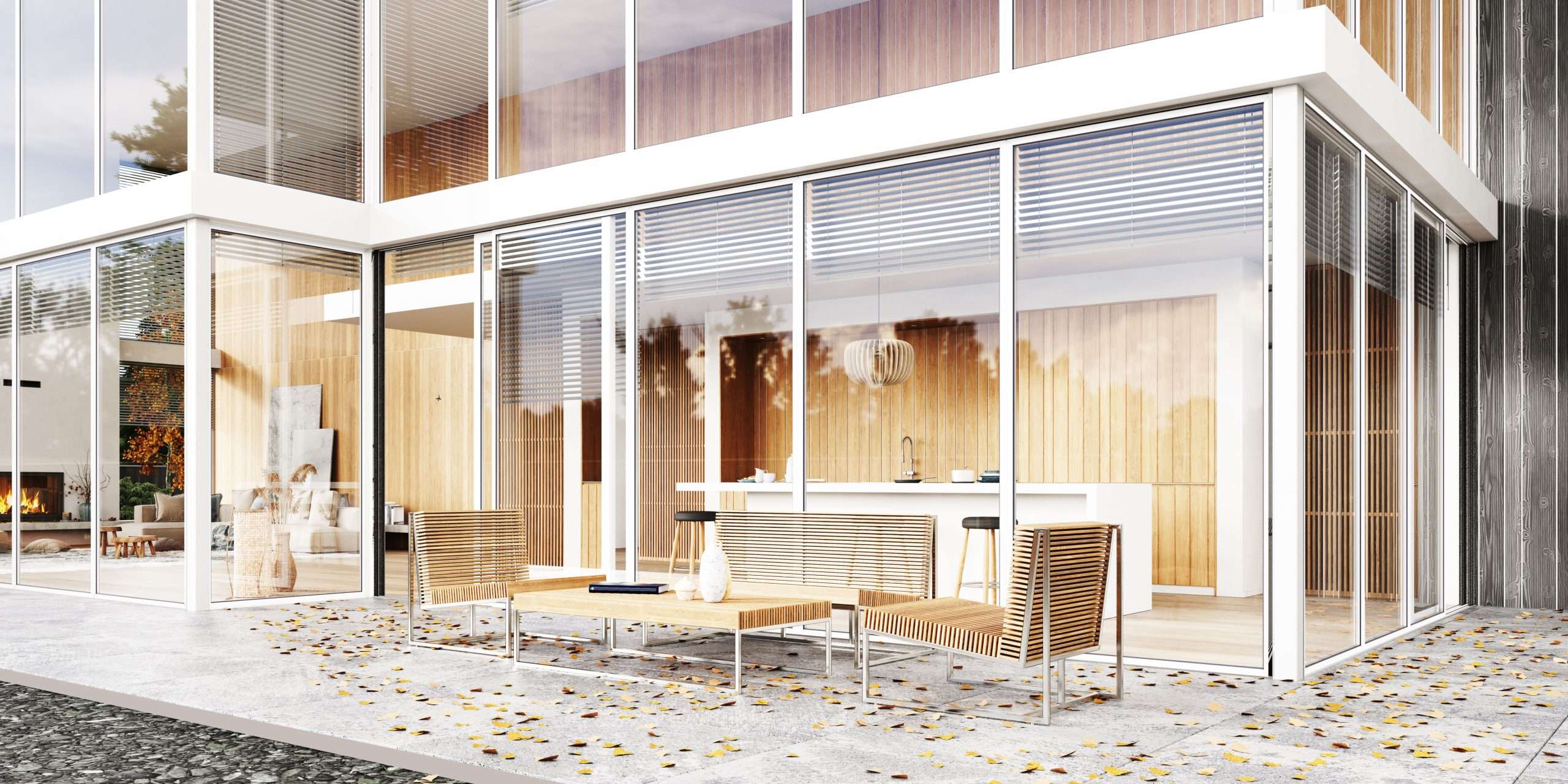A monochromatic outdoor space is a design concept that focuses on using a single color or a limited color palette to create a harmonious and visually cohesive environment. This style allows for a clean and sophisticated look, emphasizing textures, materials, and subtle variations within the chosen color scheme. In this blog post, we will guide you through the process of creating a stunning monochromatic outdoor space that exudes elegance and tranquility.
Choose a Color Palette
Start by selecting a color palette that will serve as the foundation of your monochromatic design. Consider shades and tones within a single color family, such as various hues of blues, grays, greens, or even neutrals like whites and beiges. Aim for a cohesive and balanced look by choosing colors that complement each other. If desired, you can introduce a secondary accent color sparingly to add depth and interest to the overall design.

Play with Textures and Materials
In a monochromatic outdoor space, textures and materials take center stage. Experiment with a variety of textures to create visual interest and tactile experiences. Incorporate materials like wood, stone, metal, or woven elements to add depth and contrast. For example, a wooden deck or pergola can bring warmth and natural appeal to a predominantly gray or white color scheme. Use textured cushions, rugs, or planters to introduce different tactile experiences.

Utilize Light and Shade
Light and shade play crucial roles in monochromatic designs. Use lighting strategically to highlight key areas and create a sense of depth. Consider incorporating different light fixtures, such as string lights, spotlights, or lanterns, to add ambiance and visual variation. Similarly, use shading elements like umbrellas, pergolas, or tall plants to create pockets of shade, which can enhance the overall aesthetics and provide relief during sunny days.

Focus on Plant Selection
Plants are an excellent way to introduce subtle variations and natural beauty into a monochromatic space. Choose foliage and flowers that align with your chosen color palette. For instance, if you have a blue-themed outdoor space, opt for plants like hydrangeas, delphiniums, or lavender. Alternatively, consider using plants with interesting textures or variegated leaves to add dimension. Greenery also provides a refreshing contrast against a predominantly neutral or monochromatic backdrop.

Select Furniture and Accessories
When it comes to furniture and accessories, opt for pieces that blend seamlessly with your chosen color palette. Choose outdoor furniture in similar shades or tones, keeping in mind the desired level of contrast and visual impact. Upholstery or cushions in the same color family can tie the look together. Consider adding subtle patterns or textures to break up the monotony without straying too far from the monochromatic theme.

Pay Attention to Details
In a monochromatic outdoor space, paying attention to details is essential. Consider the small elements that contribute to the overall design, such as planters, rugs, throw pillows, or even outdoor artwork. Select these details with your chosen color palette in mind, ensuring they complement the space and enhance the desired atmosphere. Cohesiveness in every aspect will create a harmonious and visually pleasing environment.

Creating a monochromatic outdoor space allows you to embrace simplicity while achieving a sophisticated and visually cohesive design. By carefully selecting a color palette, playing with textures and materials, utilizing light and shade, focusing on plant selection, and paying attention to furniture and accessory choices, you can create a stunning outdoor area that exudes elegance and tranquility. Embrace the power of a single color and let it transform your outdoor space into a harmonious sanctuary where simplicity meets style.


